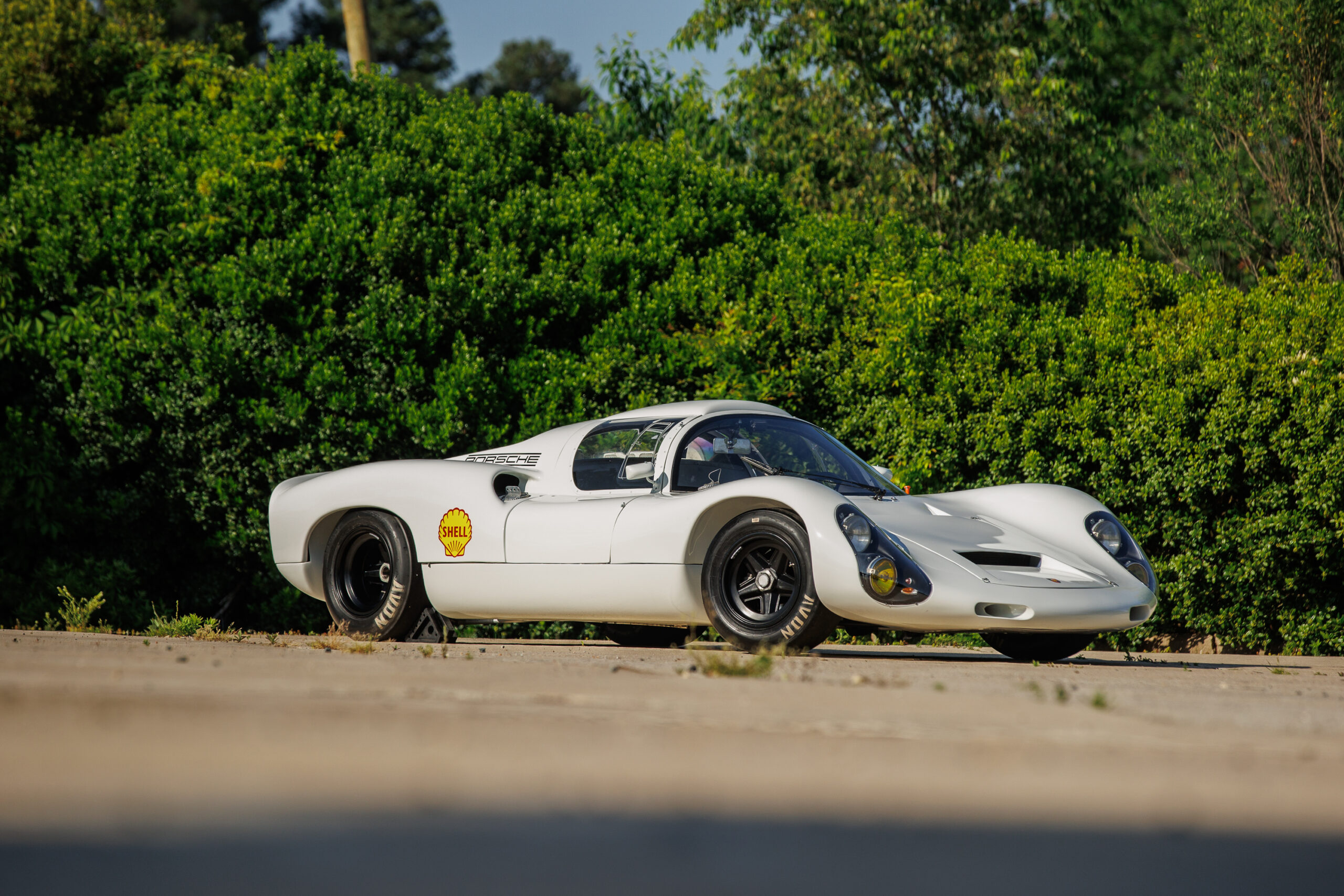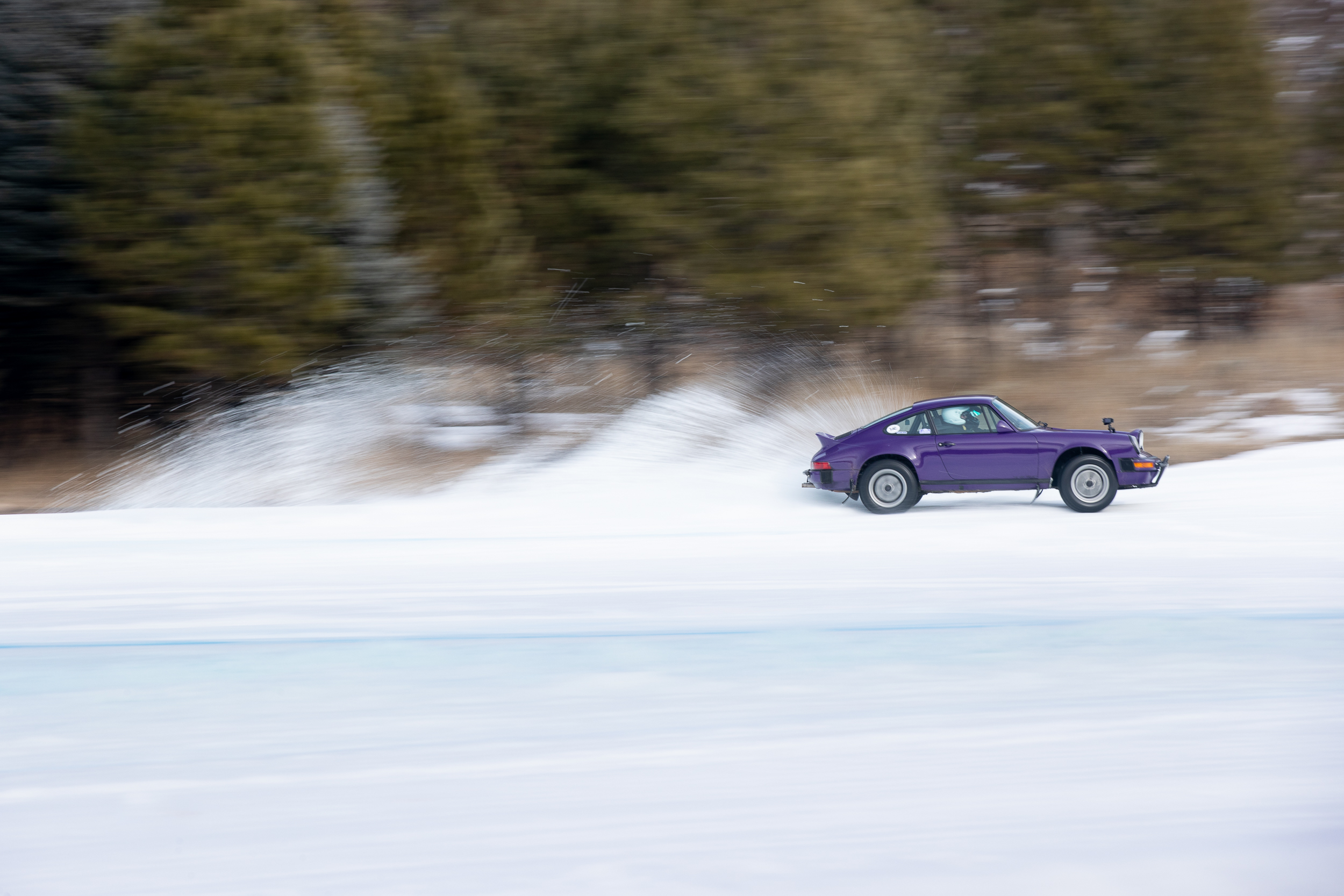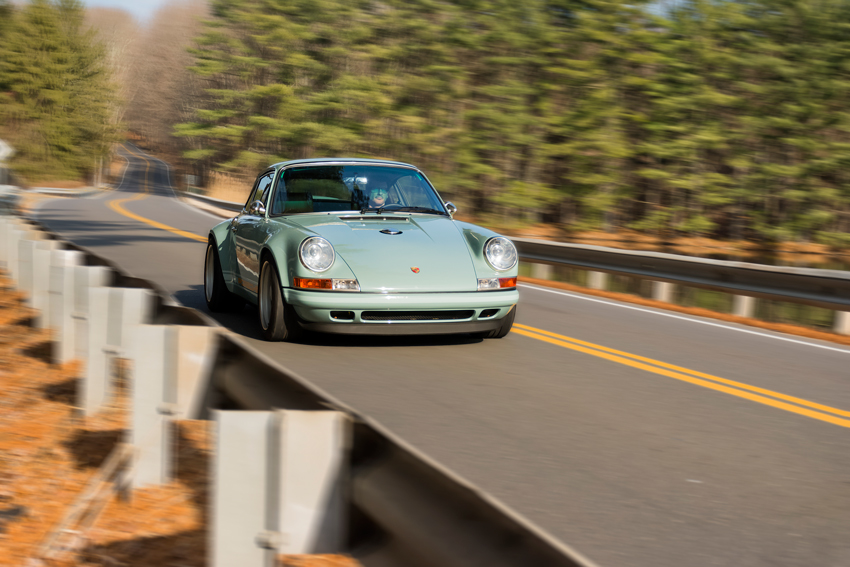
1970, August, the South of France: The Blueprint for Singer.
Five-year old Rob Dickinson was on holiday with his parents, chugging along the Auto Route in a VW Beetle.
A 911 Targa shot past them. His father said, “That’s a 911.”
The die was cast. From that day on, Dickinson has been obsessed with the 911.
In school, Rob studied design, but then he took a detour into music. In the 90s he fronted the band “Catherine Wheel,” and then continued on as a solo artist. By 2003 Dickinson had relocated to California.
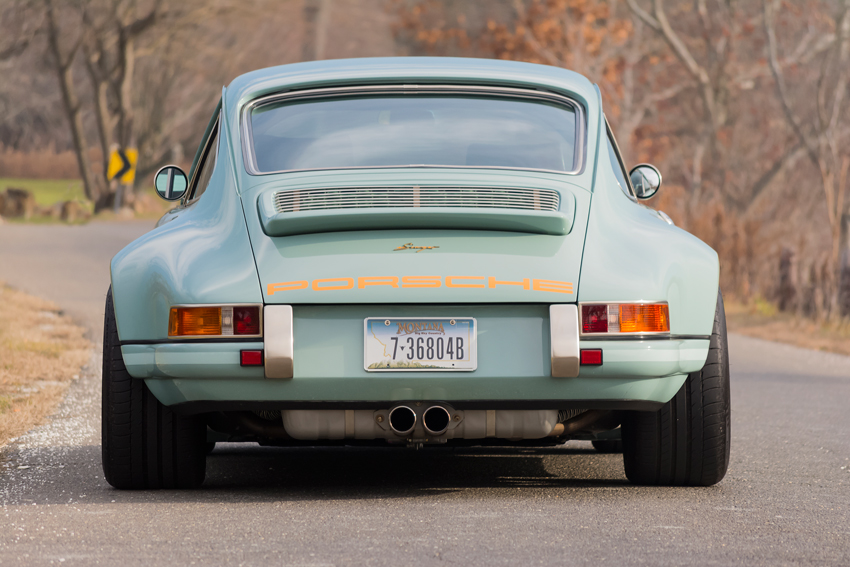
After selling off his Porsche in the UK (a slavish process done in absolute correctness), Rob decided to build himself a hot rod, something inline with his own aesthetic desires.
A 1969 911E was the starting point; from there, there were doses of RSR, RS, S2, R, and Dickinson created a road racing vibe that was a stand out in the famous (infamous?) R Gruppe.
He’s lost track of how many times he was stopped at traffic lights by record producers, movie directors, and LA Lawyers – all who have an eye for rolling exotic art – and had to repeat “The car is not for sale… but maybe I could build one for you, if you’re really interested.”
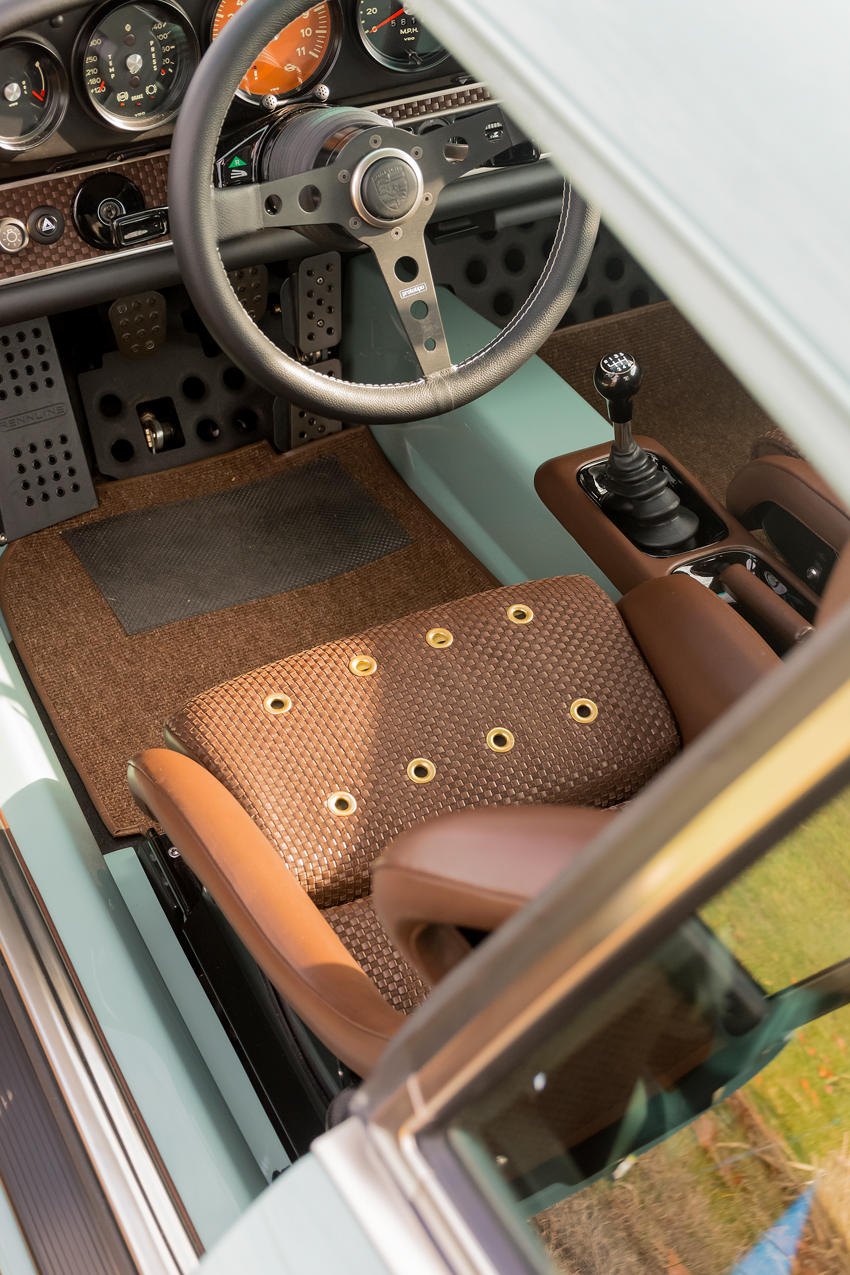
This notion, after many permutations, became Singer Vehicle Design. The name paid homage to two individuals, Norbert Singer, Porsche’s engineer whom Rob admired, and Rob’s own career as lead guitarist and singer for the band Catherine Wheel.

Kinetic Jewelry in Rarified Air
In August 2009, at the Monterey Historics at Laguna Seca, Singer Vehicle Designs gave the world a first look at what it had done, showing an air-cooled Porsche turned up to 11!
The machine that was re-imagined by Singer – to this day – walks a fine line between the very delicate appearance of the early 911 road car and the more butch, motor-sport look of the racing Porsches of that same period. It is a proper middle ground. This didn’t happen by chance. This is the image Dickinson has been obsessing about for his whole life, being a designer, and living in the largest Porsche market on planet earth. All these things conspired to make the car what it is today.
It had taken a year and a half to get to Monterey in 2009. The not-yet-running machine revealed Dickinson’s visual idea, to see if a machine like this with its technical specs and its aesthetics will resonate with others equally obsessed as Rob.

People who breathe this rarefied air seemed to agree. There was an urgent desire for this rolling piece of jewelry.
The lucky few who can go that deep into their pockets drop off their 1990-1994, Typ 964 Porsche for reimagination by Singer Vehicle Design. They have countless decisions to make in the recreation of their beloved car. There are three engines and two gearboxes to choose from, as well as endless interior and exterior details for the owner to imagine. All this leads to a completely personalized bespoke machine.
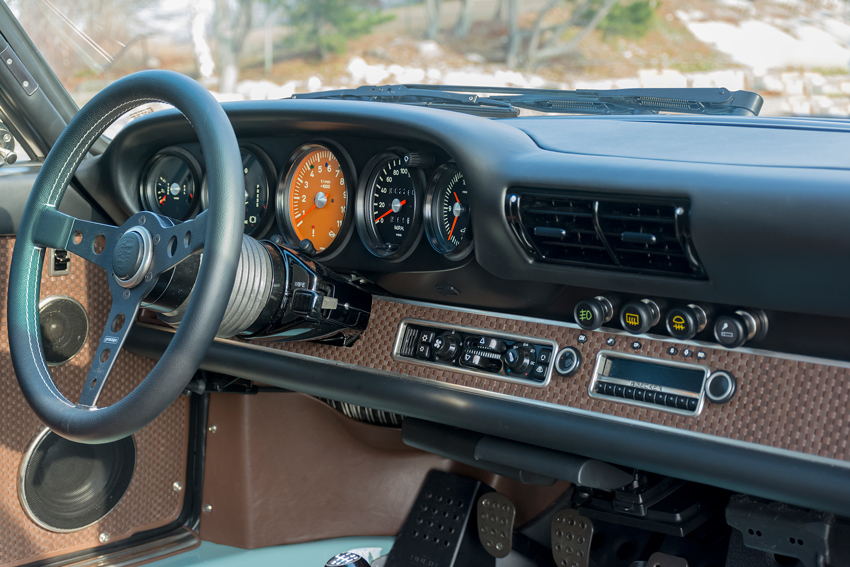

The process is like recording an album had been for Dickinson, but the attention to detail here is even more exacting. Instead of creating something he hoped millions will like, now he has to laser into the tastes and dreams of that one individual and deliver everything he or she wants.
This process is not a quick one; it takes seven to eight months for the rebirth to take place. More than 150 vendors and suppliers and 35 craftsmen at Singer HQ participate in the process.
The reimagining begins with the look of the early 911, taking styling cues from the 64-73 cars, and enhancing the confident stance even while keeping it understated. “This is how a 911 should look,” is Dickinson’s opinion. “We’re not redesigning, we are celebrating all the wonderful details in Porsche history.”
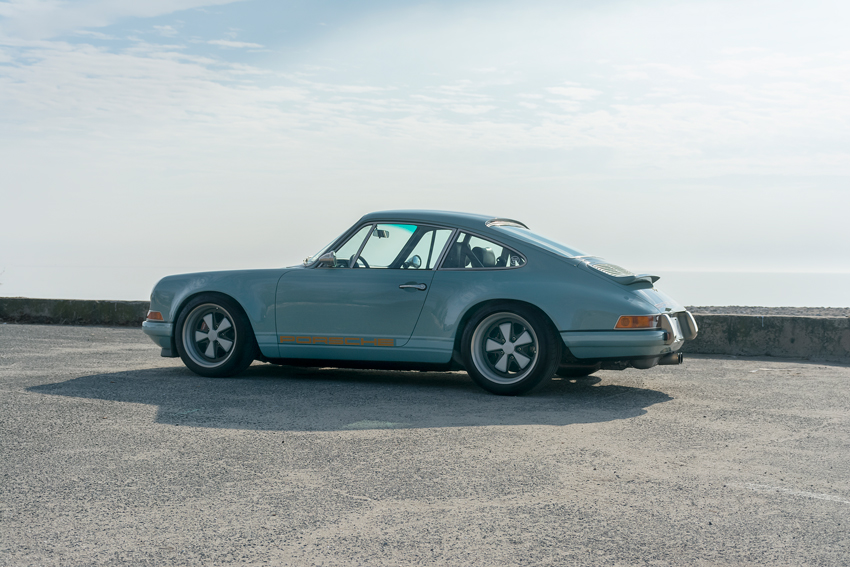
There is not a millimeter of the car that has not been considered. Nothing has been touched just for the sake of touching. If something can be simplified, made faster or more beautiful by making it more functional, it is done. The aim is to prove Dr. Porsche’s statement that beauty follows functionality.
Seen objectively, the car has to be as desirable to its owner as possible, in every sense – from performance, to tactile and visual senses, to an emotional response – to be able to justify its price tag.
Even with all this exclusivity, in the end one of the most important things is that the customer’s car remains an absolute weapon of a performance machine, as well as being a sheer jewel. This is what sets Singer’s services apart – uncompromising dedication to the whole machine. With this is created a visceral thrill that, at least some would say, cannot be purchased off the showroom floor.
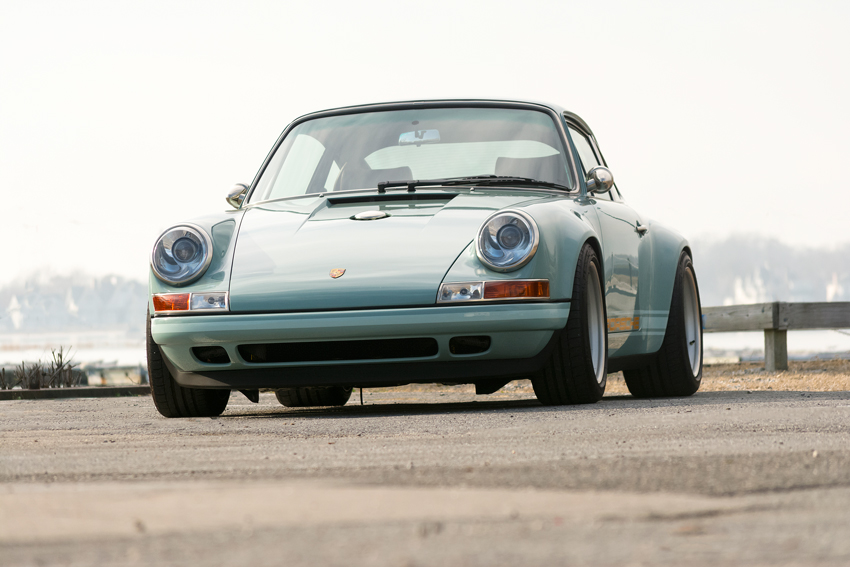
When an enthusiastic owner of a Porsche reimagined by Singer asks, “Do you want to drive?” The answer is not the problem. The problem is how fast can you get yourself in the drivers seat.
If you have driven early 911s you are climbing into a very familiar environment. The elegant five-gauge layout and the view out the windshield are what you expect. But then you start noticing the differences and the fanatical attention to details: The leather on the dash, the feel of the door pull, the no-nonsense side mirrors, the beautifully sculpted fenders, the fuel and oil filler caps, and the tachometer that goes to 11.
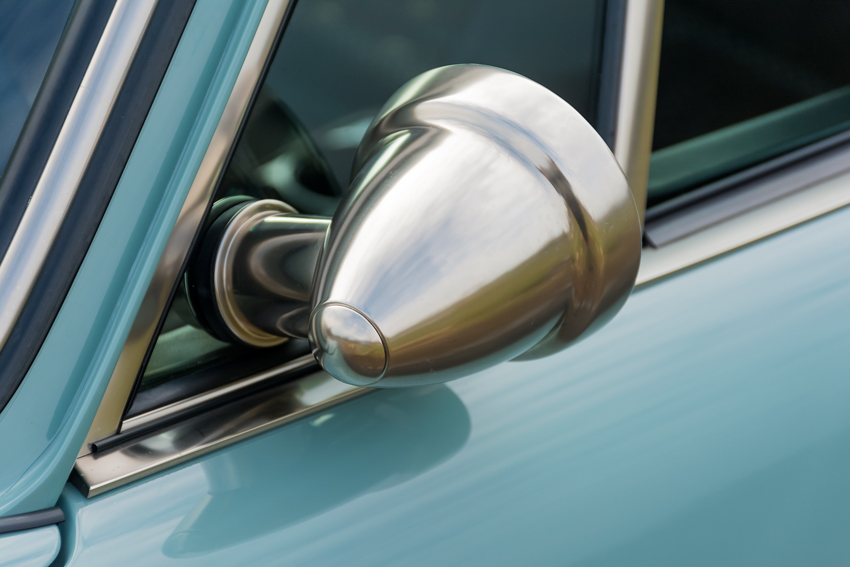
When the constraints of high-volume production are taken away and imagination takes over, a machine like this can come to light. It is the distillation of the perfect air-cooled iconic 911 at your fingertips.
Throttle response is razor sharp and instantaneous, pinning you to the body hugging seats. Music from the exhaust demands to be played over and over again. The car is very solid. It’s much more tactile than a modern machine. It has the right road feel, and it steers like a proper 911. Behind the wheel, you are in the moment and working with a finely crafted machine. You have the ABS from the Typ 964, but you don’t have computer nannies driving for you. It’s driver + Porsche + road. It’s very analog without feeling dated.
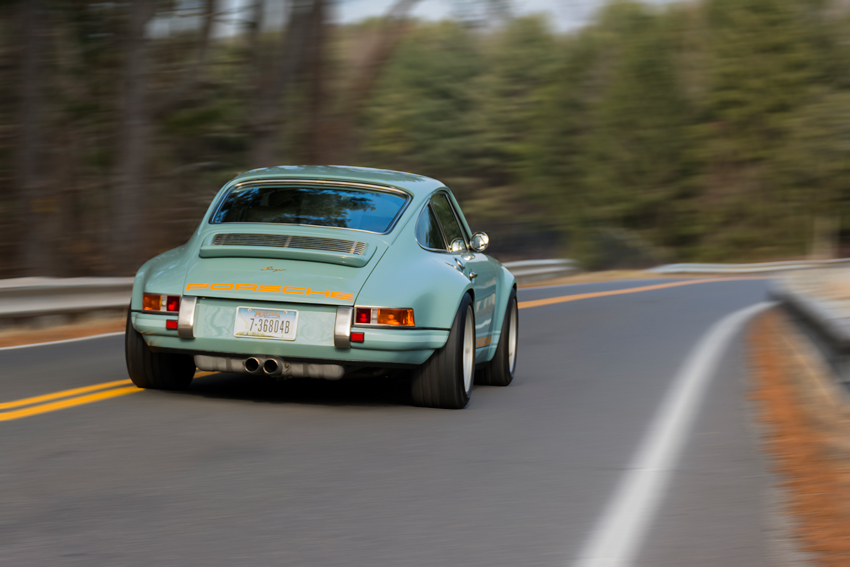
The Singer build may take time, but the careful process creates a completely personal and bespoke car. There are no surprises; it’s as you wanted it. And Rob Dickinson has been there with you, helping in the rebirth of your Porsche from bare metal frame to delivery of your dream.
There is no one resting on their laurels at Singer. The company is once again riffing on the original tune that Porsche started many years ago. They are now working with Ed Pink Racing Engines to create their own new 4.0-liter engine. It’s a perfect pairing as Pink, among other successes, had been involved as engine builder for the BFGoodrich/Busby Racing 962s in the 1980s. The team has produced a real beast! Yet it’s still a very livable engine with gobs of torque so you don’t have to shift so much.
But why would you want to do less of that? Their transmission is a thing of beauty, and you want to engage it do your bidding.
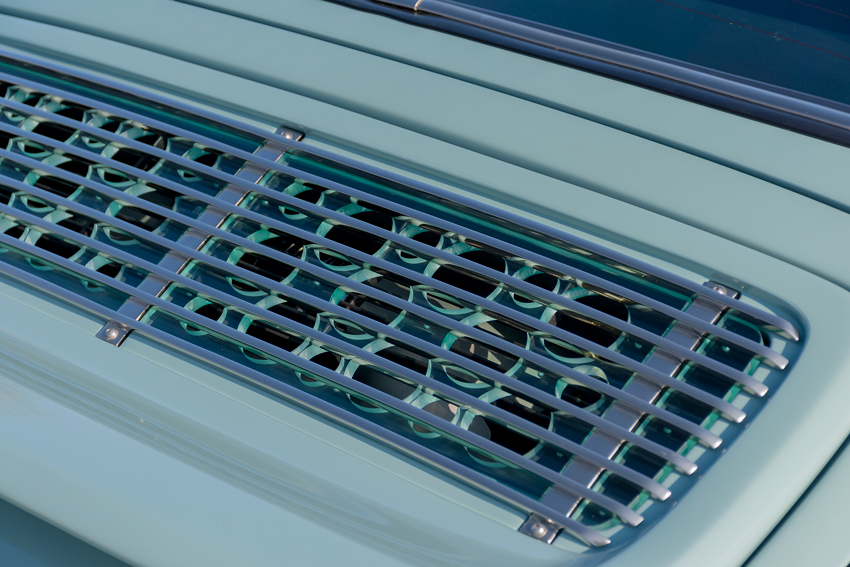
With all that motivation you need deceleration. So Singer has created their own take on carbon ceramic brakes, with full testing commencing very soon. These won’t be track-day-only brakes; they also are meant to keep the car in check in the real world.
Dickinson has added all-wheel drive to Singer’s arsenal of performance options. Again Singer has chosen the best and most-motorsport version of Porsches all wheel configurations – the torque tube, front differential, and viscous coupler, as well as G64 six-speed gear from the 993, and the 993’s four-channel Bosch ABS5 braking system from the car. Front drive shafts are bespoke to Singer specifications, all to keep their creations under control.
They have also given customers the option of open-air motoring with Singer’s take on Porsche’s classic Targa, perhaps inspired by that pivotal August day in the south of France in 1970. It takes a lot of work to make something look easy, and lots went into the Targa. Their dedication to detail is beyond belief.
Fortunately, for those of us who only can dream of having a Singer Vehicle Design-prepared masterpiece in our garage, they now offer the next best thing, something for our coffee table called One More than 10: Singer and the Porsche 911, a book on the world of Rob Dickinson and Singer.



